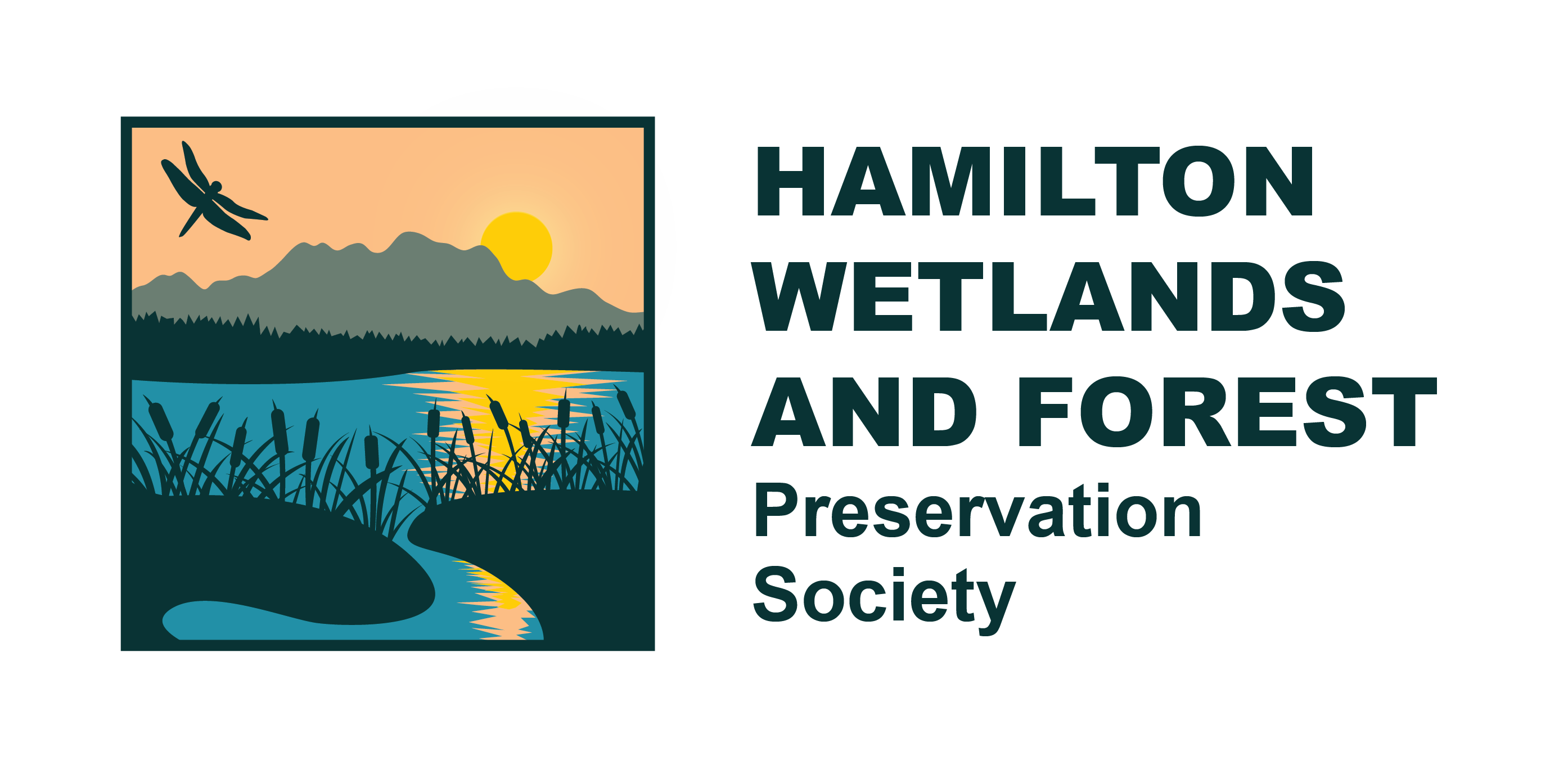Wildlife
Almost all species of wildlife depend on wetlands at some point in their life-cycle.


Wildlife in and around Hamilton Marsh
Wildlife:
- One third of Canada’s species at risk depend on wetlands for all or part of their lifecycle.*
Birds:
- Hamilton Marsh is the most productive waterfowl breeding marsh of 32 area wetland studied. Over 130 bird species have been identified at Hamilton Marsh. List of birds identified at Hamilton Marsh
Dragonflies:
- The Odonata of Hamilton Marsh is a published paper about dragonflies at Hamilton Marsh. Thirty species of dragonflies have been recorded, some rare. It’s a conservative number – as many more exist yet to be identified. The Odonata of Hamilton Marsh was written by Dr. Rob Cannings and John Simaika. The paper gives lots of information about the wetland. See it here. A more detailed version with visuals click here.
Carbon Sink:
- While wetlands occupy only six percent of the world’s land surface, peat wetlands hold twice the carbon found in all the world’s forests. https://www.unep.org/news-and-stories/story/peatlands-store-twice-much-carbon-all-worlds-forests
Red & Blue Listed Species
There are a number of red and blue-listed species that have been recorded using the marsh and surrounds including:
- American Bittern (blue),
- Western Screech-owl (COSEWIC & SARA Special Concern; blue),
- Northern Pygmy Owl (blue),
- Band-tailed Pigeon (blue),
- Great Blue Heron (blue),
- Roosevelt Elk (blue),
- Common Water Shrew (red-listed).
The marsh and surrounds are also important for Black Bears, all the species of owls in this area, early migrant swallows, migrant shorebirds, and is used as a roosting area for shorebirds during high tides along the coast. The Grey Wolf has also been seen in the area.
Source for Red & Blue listed species: Neil Dawe, R.P. Bio., Environment Canada, Canadian Wildlife Service,
Click here for a database of red and blue listed species seen or expected in Hamilton Marsh.
